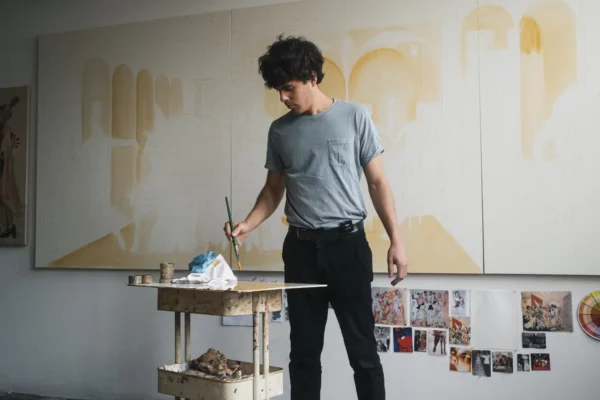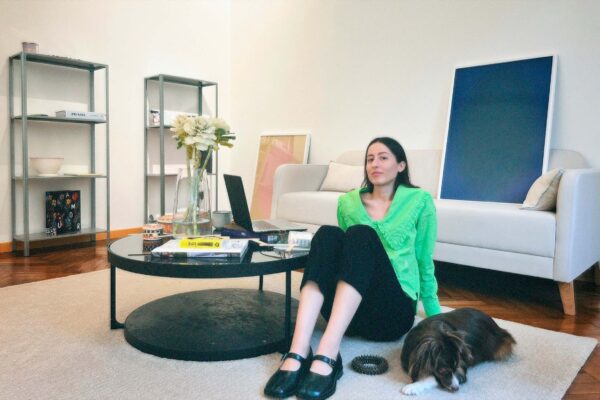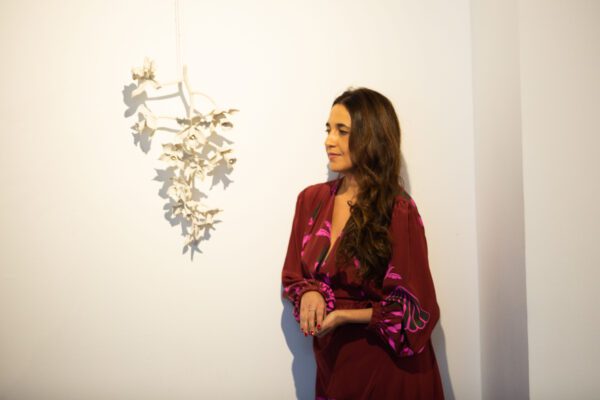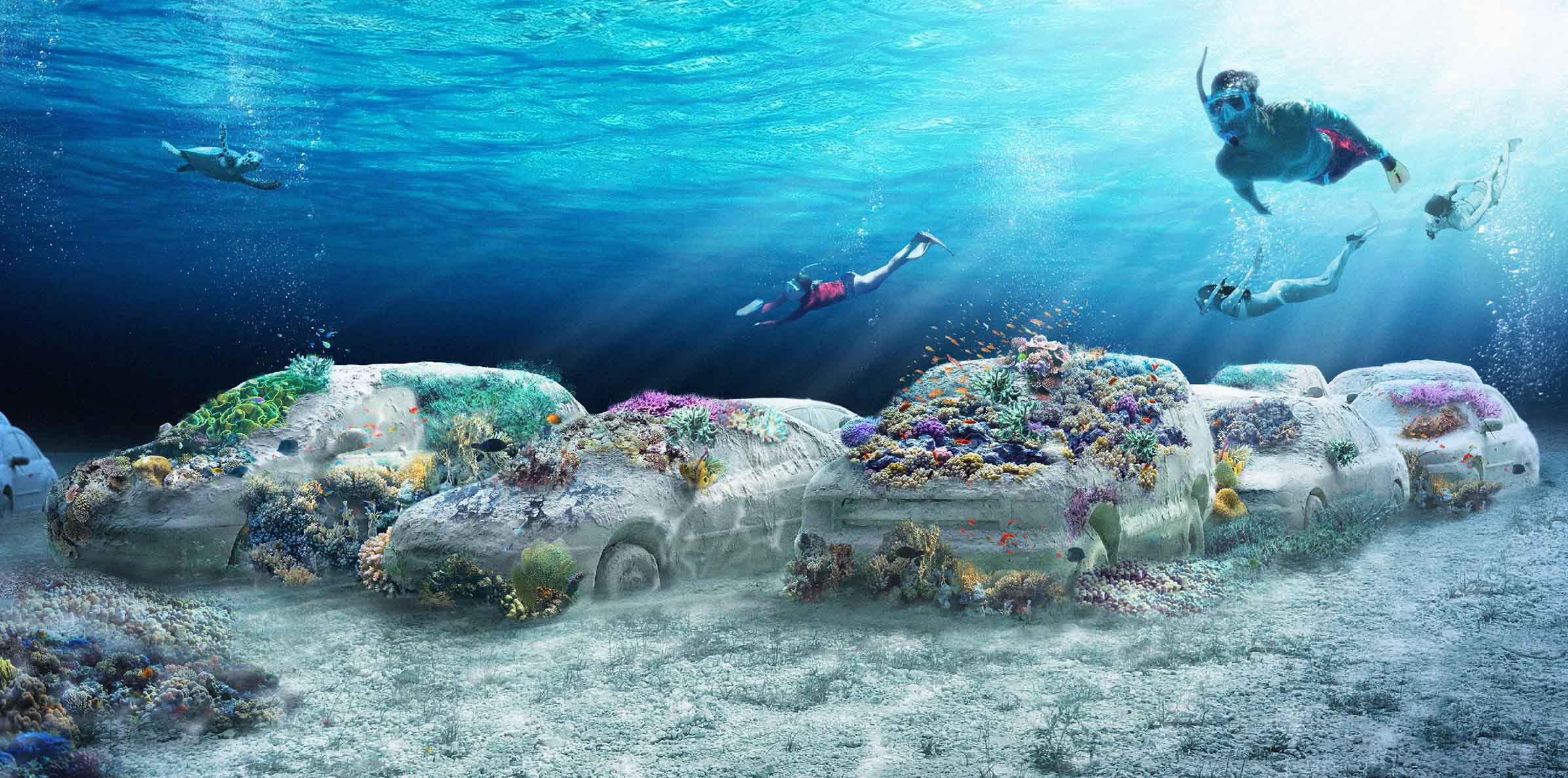
‘Concrete Coral’ sculpture by Leandro Erlich for Reefline.
COFFEE WITH
XIMENA CAMINOS: “ART HAS BEEN THE GREAT ALLY OF ALL REVOLUTIONS”
Name: Ximena Caminos
Profession: Art Curator, Cultural Placemaker
Nationality: Argentina
Zodiac sign: Gemini
Instagram: @xcaminos
LATINNESS: Ximena, for those who aren’t familiar with your work in this industry, what does it mean to be a cultural placemaker?
XIMENA: There are two words that I love: urban acupuncture. This means that your work tool for achieving this creative placemaking is culture.
Any project I take on has, at its heart, culture— and of course the arts— but culture more broadly, in all its aspects.
So, it’s using cultural tools to create spaces or experiences, trigger people’s imagination and inspire, and raise the quality of life. I think art and culture, in general, are the most powerful tools to do that kind of thing. Besides, I feel like the world needs a little bit of that, right?
We’re in such a transactional world that sometimes culture seems like something that, in many ways, can strip you of everything. However, your culture will always be with you and live in you. It’s something you have to invest in, it gives you a sense of pride and community, and it connects people.
In conclusion, it means that, whatever project I do, whether for profit or not for profit, it will always be infused with purpose and cultural direction. If not, I’m not interested in doing it.
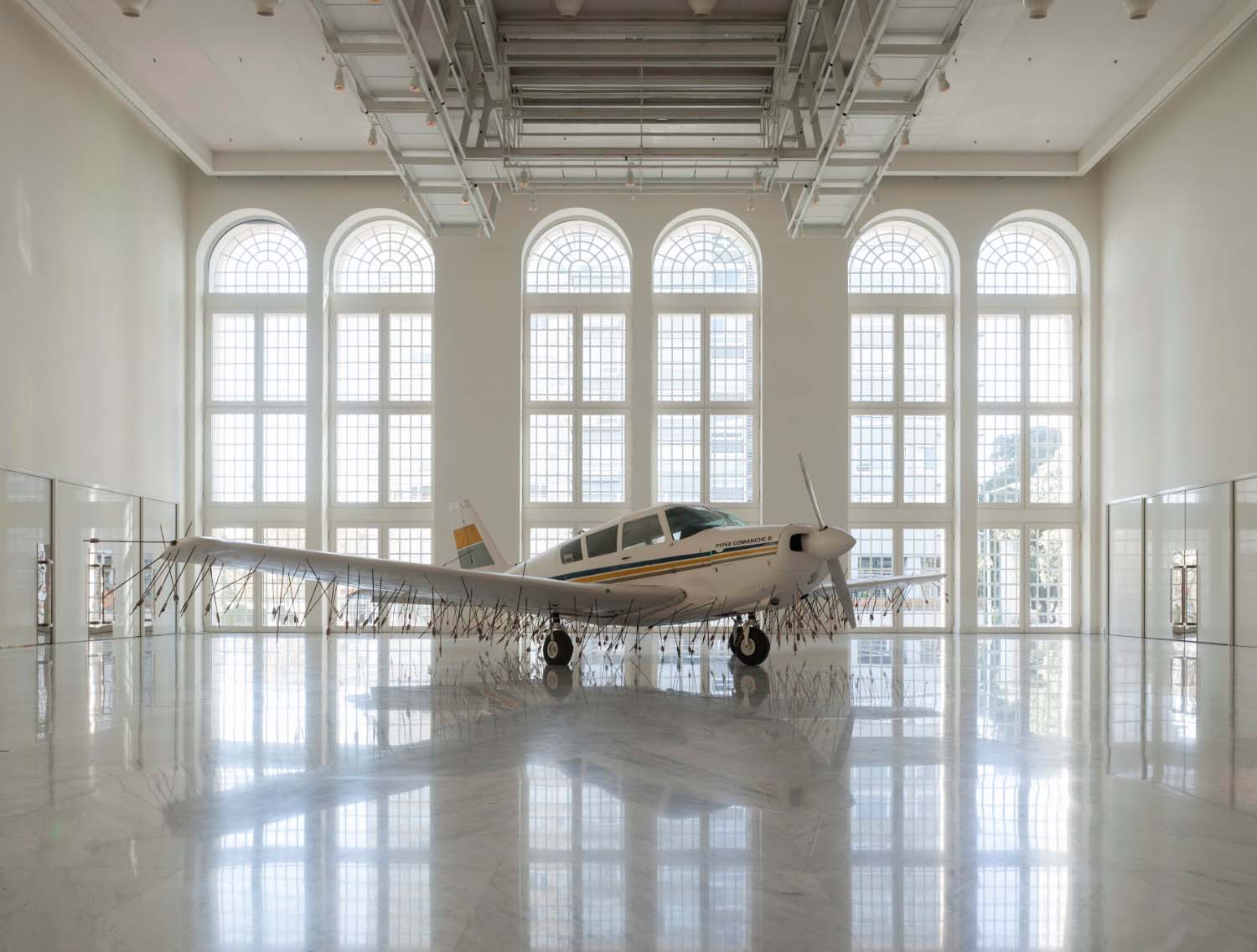
Los Carpinteros at Faena Art Center Buenos Aires curated by Ximena Caminos in 2012.
LATINNESS: You worked in the art world in Argentina before moving to Miami, where, as Artistic Director of Faena, you led a project that changed the country’s cultural scene. Did you see the before and after?
XIMENA: Yes, totally. I started working in art when I was 15 years old, long before Faena. In Faena I arrived with 30 accomplishments, but as a teenager, I painted and intervened in my room. My mother’s best friend, Laura Buccelatto, was the Director of the Museum of Modern Art and said to my mother, “You have to do something with this girl”. They sent me to study with one of the great Latin American teachers of that time, Luis Felipe Noé.
I also studied with Chucho, who is still alive, must be almost 100 years old. He’s one of the four great masters. I was with him for about three years, and then went on to learn from others, all very good.
Simultaneously, I also worked in the cultural field. I started working at the Recoleta Cultural Center, which was the first to open its doors after the military dictatorship. In those days, there were 21 exhibition halls, and we didn’t even have money to buy soap for the bathroom. The only thing the city government gave us was space and salaries for the people who worked there, who were about 80 years old. I was the youngest one there.
I brought my first computer, and was always a cultural agitator from a very young age because I grew up in that world of art. I always knew very well what artists needed to flourish, so when I met Alan, a long time later, I was already working in this industry.
I was a curator at MALBA, the Museum of Latin American Art, and had already done several biennials, juried shows by Alex Katz and Jenny Howser, directed the city’s Secretary of Culture and the Cultural Affairs area at the Chancellery. I had inaugurated the Argentine pavilion at the Venice Biennale. When we took Leandro Erlich from the Chancellery, I met Alan.
In those days, Alan had a project (the hotel hadn’t yet opened). The year was 2004. Art was also a very important subject for him. It was then that I created the Faena Prize for the Arts because we still didn’t have a cultural center.
We used the hotel as a platform, and we opened the Faena Art Center with a program that was radical. In fact, it was a game changer because in Argentina such a space didn’t exist. All the spaces showing avant-garde art were very small or very underground. Here, we gave the artists a stage and a budget and put them in the spotlight. So yes, I think it was a game changer for the arts in Argentina. It was and is recognized as one of the main spaces for contemporary art in Latin America.

Ximena Caminos with Leandro Elrich’s installation ‘Order of Importance’ at Art Basel Miami Beach, 2019.
LATINNESS: Why did you make the leap to Miami?
XIMENA: All that training and so many years —I think I must’ve been in Buenos Aires for about 10— helped me to come and plant a flag in culture and the arts in Miami, and later, in the United States and the world.
I’d already worked internationally, but I hadn’t built or led an institution. I took on isolated projects in different places, however, it’s another thing to open an entire program. One of my best friends, Carlos Basualdo, curator of the Philadelphia Museum of Modern Art, gave me great advice on this. He and I grew up together. He was my adviser on many issues related to culture in the United States because he’d worked at that museum for a long time, so he guided me.
In fact, when we did Faena Art in Miami, he became my right hand, the chair of what I called the “Advisory Circle”. It was very strategic for me to work with him— I learned a lot. Now I’m no longer the chair of Faena Art. At one point, I decided to do my own thing too, and I transformed all my interests.
Art is still a priority for me, but I decided to use it as a tool for change. This means tapping into the public sentiment and speaking to people from an emotional place, and starting to work at the intersection of art, science and sustainability.
It was then that I founded the Reefline, an 11 kilometer artificial reef parallel to the coast, designed for artists. The city recently gave us a five million dollar bond to do it. Then the people had to vote, and they voted unanimously and identified it as an anchor institution, which gave me a lot of happiness and pride.
LATINNESS: So, you create art-inspired artificial reefs?
XIMENA: The artificial reef doesn’t necessarily have to be a sculpture or a work of art. What I did was combine art, science and technology.
That reef —which is necessary, but no one had thought of it— I proposed as an underwater sculpture park to serve as an ecotourism and educational tool, as well as a platform for experimentation and collaboration. In projects like this, you have artists working with scientists , marine engineers, storytellers… It’s divine! Also, it is very close to the beach.
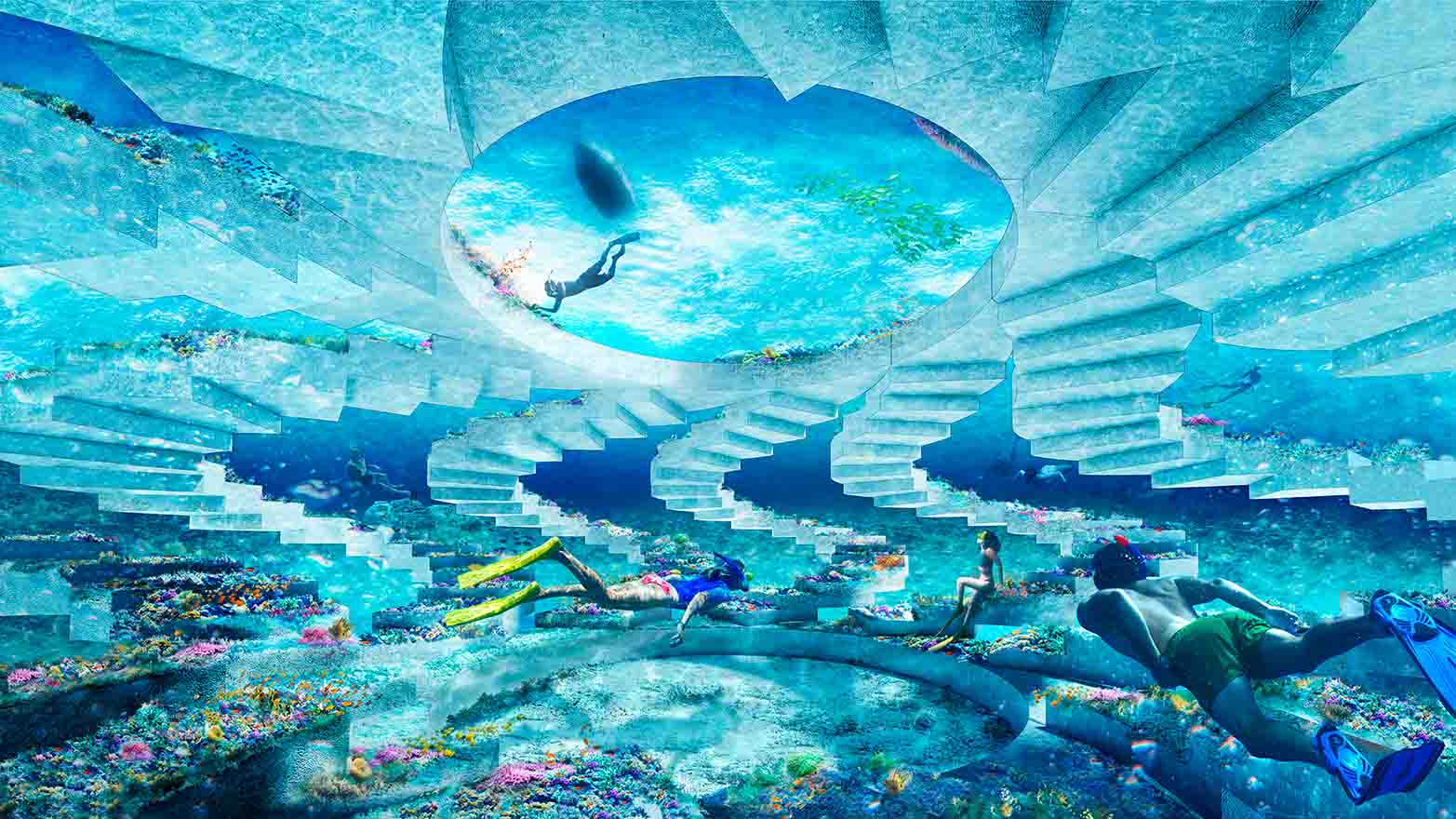
The Reefline.
LATINNESS: Beyond working in art, you’ve always concerned yourself with social change. What do you feel has influenced this very particular point of view you have in the art world?
XIMENA: Very good question. I’m interested in positive impact and everything I do is impact driven.
I always felt the urgency to communicate certain messages or the need to serve as a bridge for certain things. If you ask me what one of my gifts or my attributes is, I think a large part is connecting so that both sides are empowered as a catalyst for out of the box thinking. Also, adding value through culture.
Since I was a girl, there were several things that’ve been very important to me, and one is creating communities and bringing together like-minded people so that they can empower each other and bring ideas that have a positive impact that can be executed. A good idea is nothing without the ability to do it.
That was always a very important interest for me. Anything that means working towards a more equitable future for everyone. And then nature; especially the oceans.
Nature has been my great teacher since I was a child, because I grew up in a huge garden and went to the fields all the time. Argentina, in that sense, connects you with the Earth, and the Earth gives you a lot.
I feel that today, culture is more about taking than giving in relation to natural resources, and it seems to me that when you are in privileged positions, where you have platforms within your reach, where you can share messages that are relevant, you have a responsibility to use and transmit. I feel that responsibility.
I have a place where I can communicate certain things, and I would feel vain if I didn’t, or if I were selfish. Part of my purpose is to be that channel, to be that communicator and use art as a carrier for that message. That message is: “Can you see that we all play a role here? We all play an active part in this plan and we all have to take responsibility.”
LATINNESS: So, do you think that art can change the world?
XIMENA: I have a lot of faith in the power of art, and I think it can change the world. Art has been the great ally of all revolutions.

‘Order of Importance’ by Leandro Erlich, Art Basel Miami Beach, 2019.
LATINNESS: You mention the importance of creating community a lot. How relevant is collaboration in the art world? What role has it played in your career personally?
XIMENA: I’m super collaborative. I love intelligent and talented people, also collaborative ones. I feel most comfortable, in general, working as a team. I adore small, horizontal teams.
I think it’s the friction of minds that really drives exponential change. The idea that one plus one equals a thousand when two heads are brilliant and there’s no ego in the middle, which basically hacks everything. The ego is a great hacker.
Collaboration in the art world is one of those things that generates exponential growth. It’s one thing to work alone, and another to do it as a team. I’m not saying that one person can’t come up with incredible solutions, but I simply like interdisciplinary teams. I love working with philosophers and scientists, always from a thought, from a stream of consciousness, in an open way.
Collaboration is essential in the art world, between artists, but also in all spheres of life, and I believe that as a species, we sapiens have that gift of collaboration. We are a very collaborative breed and we can, thanks to storytelling, do it on huge scales. That is the story that must be told.
When I was a girl, I always thought about telekinesis, reading people’s minds or speaking with your mind without having to say anything. Today, the collective unconscious is on the surface and has come to the surface, because social networks have connected us. It’s the moment in which we are most connected in history. We could see it with the pandemic: suddenly everyone got on the same page, everyone stayed home, everyone put on a mask.
When people want to, they can. In Argentina, once the corralito appeared, the banks kept people’s money and everyone took to the streets. Where there is a will there’s a way, right?
Now, the questions I always ask myself are: why don’t we all get on the same page to fight for Mother Earth? What’s happening to us? Where is the glitch? Why are we so selfish and so unconscious as a species? At what point did we break away from the natural narrative and cut ourselves off? Why are we so detached from what’s really going on? Why does a hurricane have to come and hit you in the face for you to notice, or why does it have to catch fire? Why did we go to that extreme? Why can’t we be wiser?
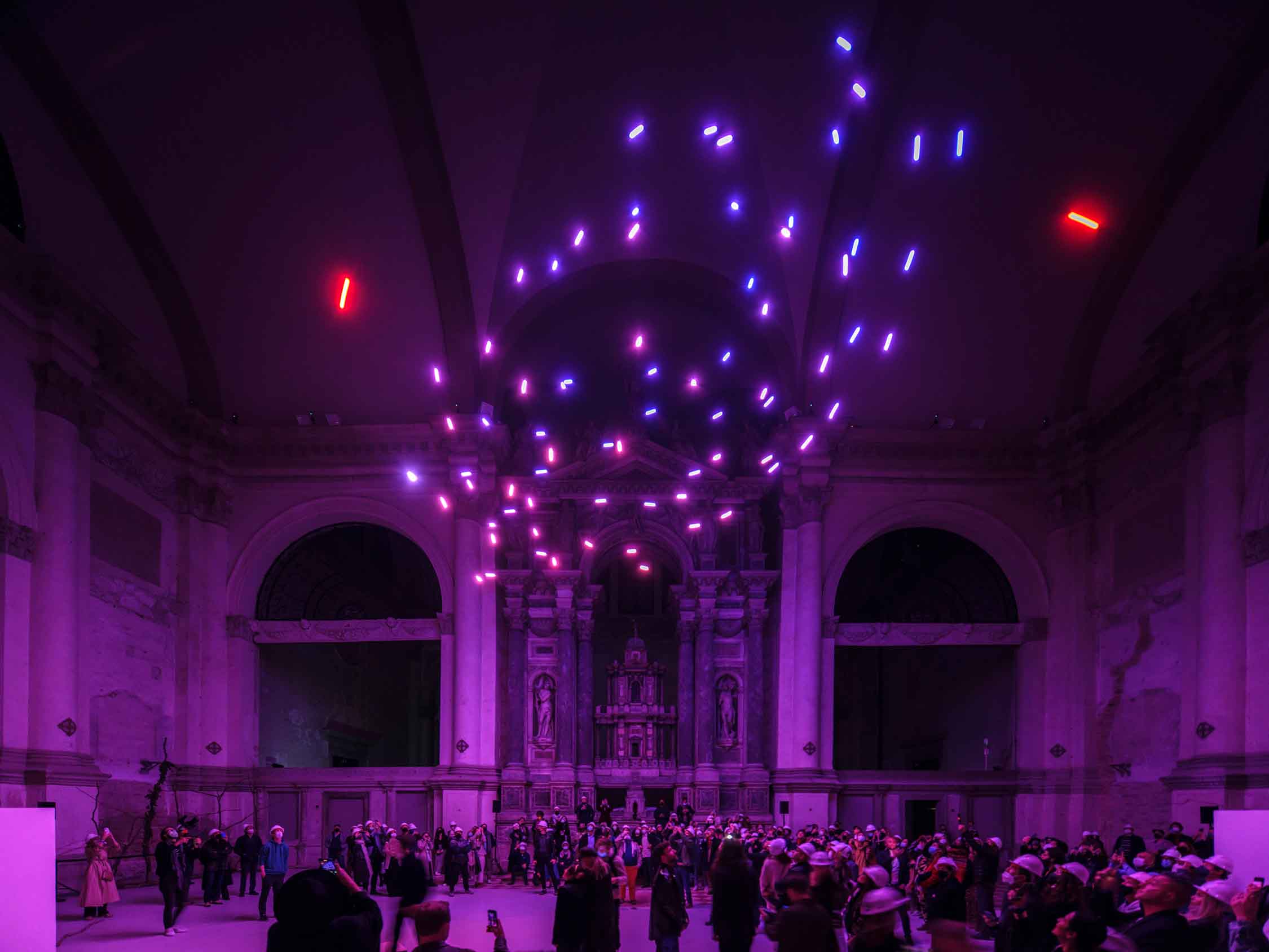
‘Social Sacrifice’ by DRIFT commissioned by Aorist.
LATINNESS: Tell us about Honey Lab Creative. What is it about and how was it born?
XIMENA: Well, it was born a bit from there, like the hive. Bees are, in a way, the great collective workers, and I liked the idea of the Honey Lab as a laboratory where we’re all making honey; honey is culture… Culture is the honey of society, in a way, the icing on the cake. I love it as a metaphor.
I had to create a creative company. I’m a hummingbird, I go here and there, and I walk everywhere. I’m a very ubiquitous soul, very Gemini, multitasker— I don’t have a job, I have like five!
Honey Lab is just that— a horizontal collaboration where we all work to create this treasure, this honey that’s our culture. It also includes the interdisciplinary, which seems fundamental to me. Interdisciplinary thinking and an interdisciplinary approach to creative thinking. It is for profit, it’s more like my creative agency. I do everything there: brands, I designed the Japanese spa at Claridge’s in London…
I have a for-profit and a non-profit because that’s my job and I love it. I’m a creative director and I dedicate myself to cultural placemaking. My non-profit is Blue Lab, a huge foundation. Through this, I created the cultural masterplan for the Underline, the entire Reefline and a lot of other things. My heart is there, but both complement each other perfectly, Honey Lab and Blue Lab. They’re laboratories. I like the idea of laboratories, a place to experiment.
LATINNESS: When you mention cultural masterplan does that mean you planned the cultural agenda?
XIMENA: Yes, the cultural masterplan– where the art goes, what artist, when, what type of program, in what neighborhood. The Underline is a ten mile linear park that starts in Brickell, there on the river, and it’s ten miles long. It’s spectacular and was done with Columbia University. It’s the largest public art project on the continent.

A view of The Underline in Miami. Image by @theunderlinemia.
LATINNESS: Why do you think public art is so important to society?
XIMENA: Because it generates a sense of place, a sense of identity. It’s that anchor. Public art is an amazing tool for connecting.
When we did the Underline, I loved it because the place is all public art. Art heals. For me, art is health… It heals many things. They’re the emotions in people. It heals urban scars.
I saw the Underline, which is under the Miami Metrorail and was a horrible, abandoned land, like an urban scar. Art transforms that scar in some way, and it does so through a park, a place where the community comes to meet, a participatory space, to celebrate.
So art heals, art summons, art unites, especially public art. A work that’s locked up in a museum is not the same— no matter how divine it may be— as putting it in a park. Like the Refik Anadol that I did here on the beach; I don’t know if you saw it at Art Basel… that giant screen. That’s what I call “urban acupuncture” or using art as that needle that has a cultural virus.
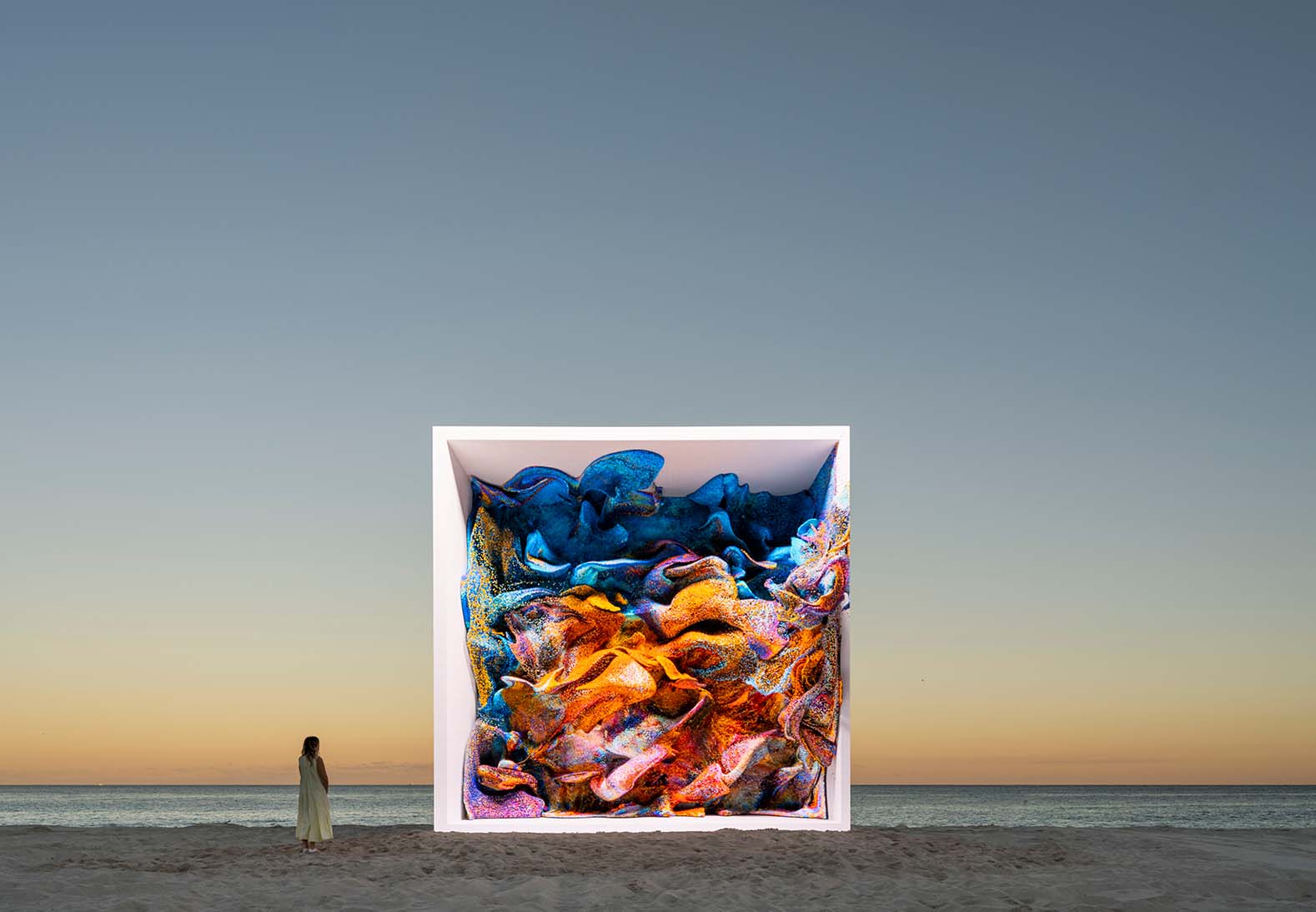
Installation by artist Refik in collaboration with Aorist in Miami Beach.
LATINNESS: You mentioned you love working with brilliant artists. What is it about an artist that attracts your attention?
XIMENA: The first thing that amazes me is that they’ve decided to be an artist because I think you have to be very brave to become one— it’s a passion and a difficult path.
I love supporting those people who have vision and a lot of courage. I support them in making it possible to carry out radical, groundbreaking work. Since I’m also an artist and have worked my whole life in that field, I have many tools. I know how to do, not just think, and sometimes artists need that counterpart, to push them to finish guiding and consolidating concepts that translate into reality. I have a gift for that, I really enjoy that process.
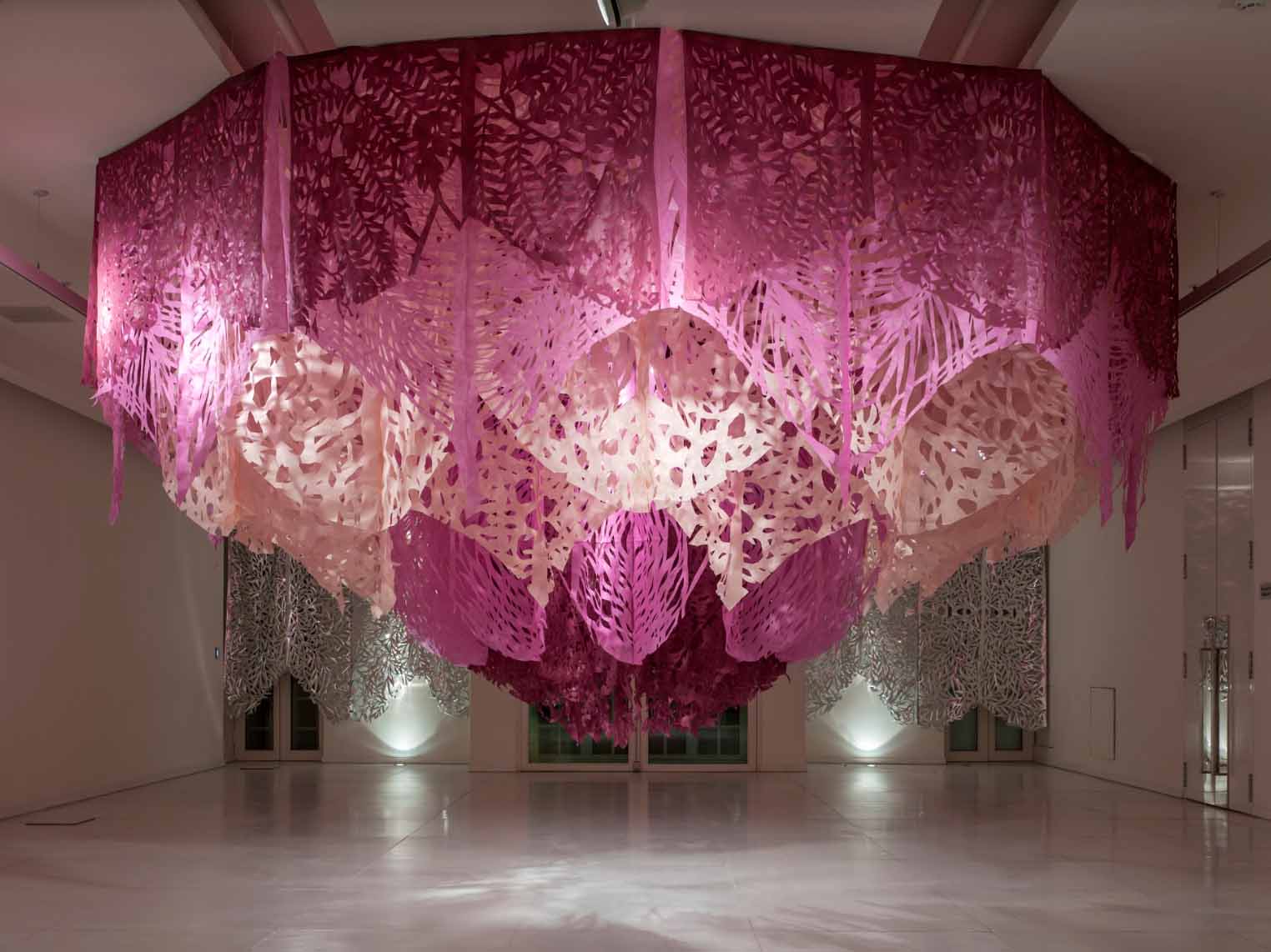
‘Los Paraísos Desplegables’ by Manuel Ameztoy, Faena Art Center Buenos Aires, 2012.
LATINNESS: As a creative, what legacy would you like to leave to your children and future generations?
XIMENA: My children are artists. Lucio, 22, studies Design at SCAD, and is a wonderful illustrator, and Emma, Architecture at Parson’s, and is an amazing artist. The smallest is yet to be defined, but I also see him shaping up for the humanist and the artistic.
What I would like to leave to future generations is the same thing that I leave to my children: that you have to pick your battles and invest in your dreams and projects with discernment and passion. It’s the only way. First, one has to bet on oneself, and then on others. You’ll never be able to build anything good if it doesn’t come from a good place. Working, being true to yourself and not being afraid is sometimes difficult. It’s important to follow your passion.
My children are fortunate to be able to count on me, I support them, and this, in addition to traveling, seeing the world and being empathetic with people, is one of the most important things you need to be happy. I don’t believe in one’s happiness. I think one cannot be happy alone. One is happy with others. Happiness is in sharing and doing things together. True happiness is in that empathy. The other is ego combined with narcissism.
That is the legacy: to be collaborative, supportive, compassionate, empathetic, creative and courageous.
Images courtesy of Ximena Caminos.

